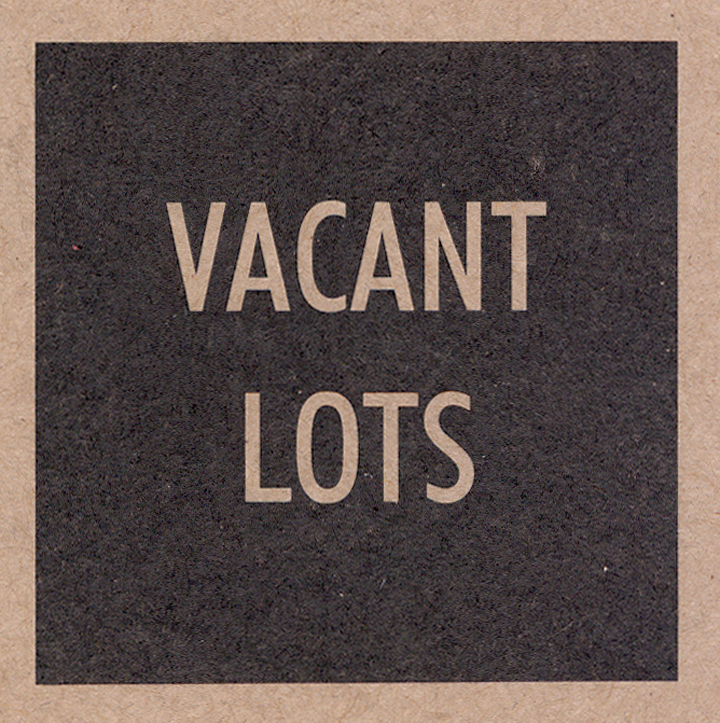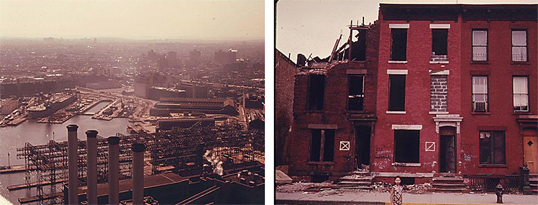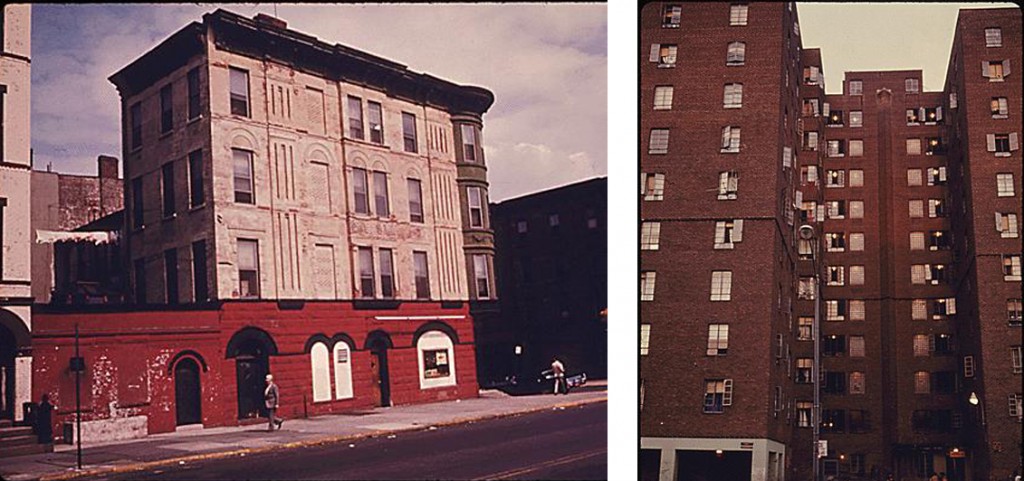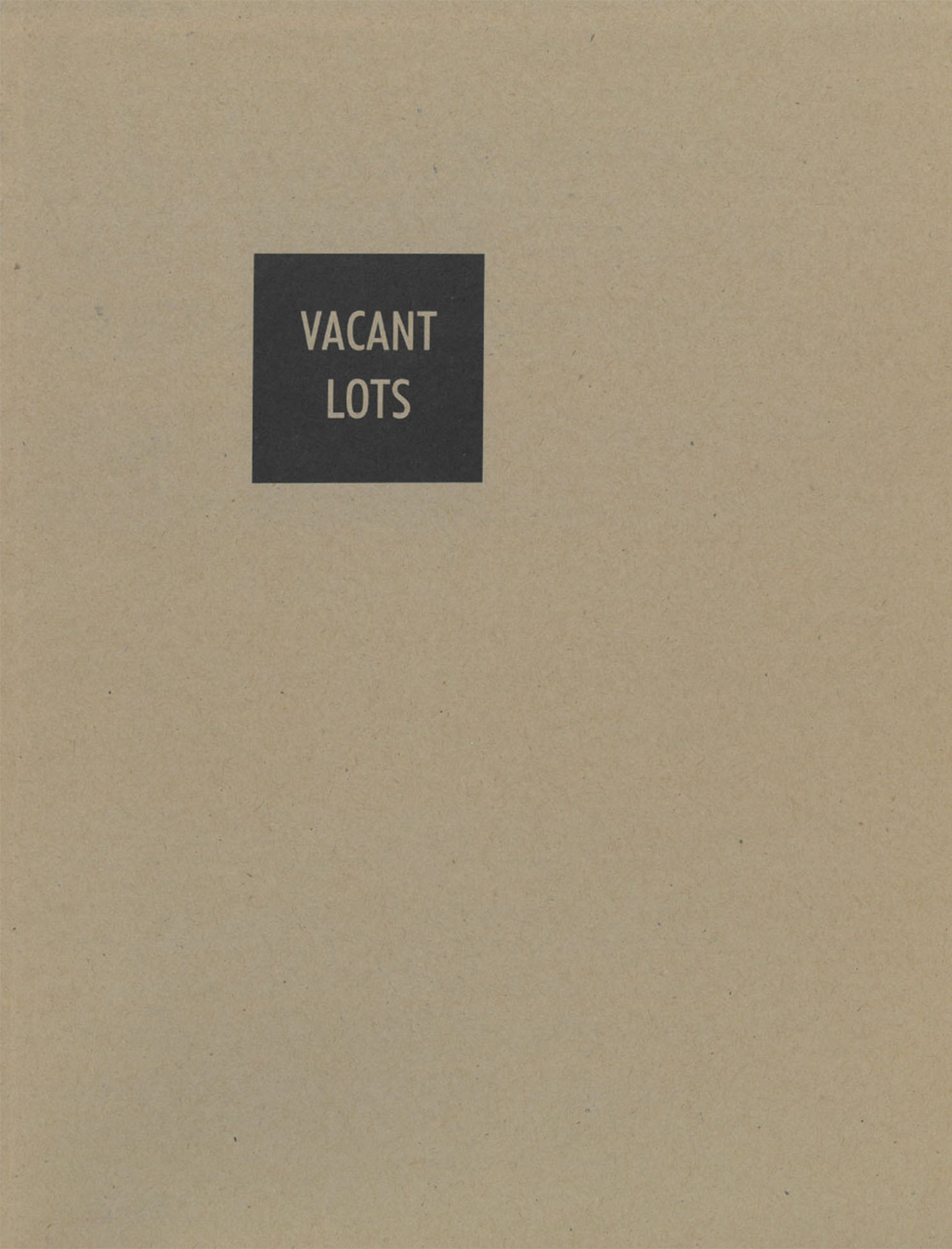A conversation with Mark Willis

In 1987, the League collaborated with the New York City Department of Housing Preservation and Development to launch a design study on the potential of small-scale infill housing to contribute to the city’s affordable housing needs. The Vacant Lots project culminated in an exhibition and publication, portions of which are republished here on archleague.org. To view the complete feature on Vacant Lots, click here.
Below, an interview with Mark Willis, the former Deputy Commissioner for Development at NYC Housing Preservation and Development, who was instrumental in organizing Vacant Lots.
Rosalie Genevro: In 1987, the year we did Vacant Lots, you were the Deputy Commissioner for Development at New York City’s Department of Housing Preservation and Development. You were one of the people who made it possible for us to do the project, by making the connection with HPD and identifying the sites we used in the design study. Would you describe what your job was at HPD, what big issues the city was facing at the time, and how you saw Vacant Lots addressing any of those issues?
Mark Willis: I became the Deputy Commissioner for Development at HPD — where all of the non-homeless housing development took place — in 1986. It was also the year Mayor Koch announced his ten-year, $5.1 billion housing plan, which was about three times larger than those of the next fifty cities combined. By the mid-1980s, New York City again had access to the capital market, so it could issue bonds, which created an opportunity to rebuild the city. Amazingly, the plan succeeded in rebuilding every part of the city.
At the time, there were still many who questioned whether the city could grow again or whether it made more sense to retreat from certain neighborhoods based on an approach referred to as “planned shrinkage.” The City owned something like 100,000 units in vacant buildings, plus a growing number of vacant lots as buildings burned down, collapsed, or were demolished. The challenge was to figure out how best to rebuild the housing stock.

(left) Brooklyn, New York, Shipyards; (right) A building partially destroyed by fire near Lynch Park, Brooklyn, c. 1974 | images courtesy of the National Archives and Records Administration
RG: Looking back, it’s astonishing to see how different the city is from what it was then. Koch poured an enormous amount of money into the city. What, besides the money, made things work? Because the collapse of these communities wasn’t solely a financial collapse.
MW: That’s true. Certainly one of the things contributing to the turnaround was that jobs were coming back into the city. Prior to this, there had been an incredible decline in the economy — between 1969 and 1976, the city lost around 600,000 jobs, many of them in manufacturing. We were fortunate to have the economic wind to our back. It’s very hard, as Detroit is finding, to do anything to save neighborhoods or communities when people don’t have or can’t get jobs. By the mid-1980s, the job situation in New York City was starting to improve.
RG: Where were jobs starting to come back from in ’85, ’86, ‘87?
MW: It was basically financial and business services that started to grow. Also important was the resiliency of the immigrant communities. New York City benefited greatly from the increased immigration allowed by the change in immigration law in 1965. Even in areas of the city where housing had been abandoned, there would be lines of people who wanted to move in to the newly created housing units, particularly with the new small homes program which provided opportunities to own your own home. It amazed us — although many local community groups had been confident that the demand would be there. The city had already begun to reinvent itself, as it has done again and again since it was founded. The one constant in New York is change; it sounds trite, but it’s both true and powerful.
The one constant in New York is change; it sounds trite, but it’s both true and powerful.
RG: In 1987, there was a sense at HPD that the big, easily developable plots in the city were pretty much exhausted, or at least had all been planned for, if not actually built. But that all of the small, interspersed plots could potentially be a resource. What were some of the strategies for or difficulties of developing bigger sites versus smaller lots?
MW: First of all, before identifying potentially developable lots, we had to decide what to do with the vacant shells. There was a lot of internal discussion about whether to just tear everything down and build all new, or preserve the surviving shells and fix them up. We made the decision to do the latter. It was mainly a planning decision to retain, as much as possible, the physical scale and architectural quality of the neighborhoods. It also did not hurt that it turned out to be cheaper to rehab than to build new. We did very little demolition. We did do some occasionally when we were convinced that vacant building was not worth saving, but we wouldn’t tear down a building just to extend the lot.
RG: Do you think, in retrospect, that was the right decision?
MW: Yes, I do.
RG: I do, too. I think it actually helped with the continuity and the rebirth of some of those neighborhoods in a way that you never could have achieved if you had knocked it all down.
MW: Though that was not a uniformly accepted view. East Brooklyn Churches, for example, fought with us because they wanted us to tear more buildings down so that they could build rows of identical, new, attached single-family homes more efficiently. Clearly it was hard to build on scattered lots, even when you use efficient, cost-saving strategies, and they looked to produce housing that was very affordable. I leave it to others to say whether we got the tradeoffs right or should have preserved more of the existing stock. East Brooklyn Churches had good intentions and an efficient system to construct new homes, but good ideas don’t always yield the best results.
RG: Very few of them, in fact, which is befuddling.
MW: Well, there’s a reason manufactured housing has never completely taken over. Yes, you can build efficiently if you just keep repeating the same thing — Levittown is an example of that. But when you’re building a one-off that has to fit into a lot of a certain size, and you don’t want a big gap on one side or the other, you have to design and craft the whole thing from scratch. You can’t take advantage, for example, of the same row house components that were replicated repeatedly to fill larger lots.

(left) House on Vanderbilt Avenue, Brooklyn; (right) Housing Project on Avenue D, Manhattan c. 1974 | images courtesy of the National Archives and Records Administration
RG: We organized Vacant Lots because there was a sense that HPD didn’t have physical models, architectural models, of how to use its small, scattered sites — those tiny lots, 25’ by 100’ in some cases. The idea was that it was important to fill in those missing teeth to help make the neighborhood whole. Was there successful use of those small sites or did that prove to be a continuingly difficult type of project to build?
MW: It’s true that those sites were very challenging. It’s difficult to make infill of a single lot economically feasible for affordable housing. Since the Vacant Lots study, CPC [Community Preservation Corporation] developed a four-story building for 50-foot lots in denser neighborhoods, which was easily replicable — but the economics of those small sites just don’t work otherwise.
RG: I think some of what was designed — for the neighborhoods in Queens, for example — could have been feasible had any individual owner picked them up, though they were not necessarily viable as a solution to a bigger problem. Did you have a lot of freedom to make judgment calls at HPD when you were there?
MW: Working for Commissioner Paul Crotty was amazing. He gave us an incredible amount of support and latitude to develop and execute the newly announced 10-year plan. One of the critical ingredients for carrying out the plan was that Mayor Koch had us meet weekly with him in City Hall to discuss progress and challenges. Through these meetings and Koch’s direct support we had more ability to influence the bureaucracy than you would normally have. I suspect that’s much less the case today. Also, Koch had incredible patience. He was willing to wait for a year and a half after announcing the program before people would see visible progress — groundbreakings, buildings going up.
RG: You hear endlessly about how important suppressing crime in the 1990s was, but rarely do you hear the rebuilding of the city that began under Koch mentioned with what should be the same adulatory tone.
MW: I think that’s absolutely right. There have been some police commissioners who have said they probably would not have been able to do what they did in those communities if not for the rebuilding. One reinforces the other. I don’t know that it couldn’t have happened, but it would’ve been a lot harder. Home ownership, I think, matters too. When homeowners moved into the neighborhoods, they were more aggressive against crime, and advocating for expected government services, et cetera. It’s not that renters don’t do the same, but I think homeowners fight when renters, even people who have been there a long time, have maybe given up.
There is an advantage to thinking holistically about what a community will be like once it is built. Having that vision is critical.
RG: True. Although, as we’ve seen, homeownership is no silver bullet for the problems of the world. What do you think, if anything, has changed since 1987 in the nature of the housing problems that we have and the ways people know how to approach them? Or are we still in the same place?
MW: We are still struggling with the same problems of how to build cheaper affordable housing. It’s a perennial search. There are two issues: the first is whether we have enough housing, and the other is the price of that housing. I wonder if all the recent rezoning might have limited the city’s ability to expand the housing stock. I would have liked for it to have provided for more density and taken more advantage of where transit points are. As a result, I worry that we have made our potential supply more constrained which, from an economist’s point of view, yields a higher cost of housing overall. The administration has projected that we’re going to have six or eight hundred thousand more people by 2030. Population can’t increase unless there are places for people to live. If demand increases but the supply cannot easily expand, then the price goes up.
Affordability of rents, and of house prices, is a bigger and bigger problem. It’s less likely today that we will see a lot of properties abandoned because owners often have the option to upgrade them and get higher rents. But operating and maintenance costs as well as taxes have gone up, and so minimum rents needed for landlords just to break even have gone up. As that level goes up, and incomes don’t – because for 30 years the incomes of the bottom one, two or three quintiles, quite honestly, haven’t gone up – you’re caught in a vice. The City can’t build affordable housing fast enough to stay ahead of the problem. Bloomberg’s goal of 165,000 units over ten years is a great thing, but it’s not enough.
Another problem with affordability is that a lot of low-rent apartments are being rented by people with higher incomes, leaving even fewer units available for those with lower incomes. And with rent regulation and subsidized housing, we also have people occupying more space than they need or would be willing to pay for at market rents.
RG: It is fascinating how the idea of people occupying too much space has recently blossomed into conversation and consciousness. It is one of the points of the Making Room design study that the League did with the Citizens Housing and Planning Council, which looked in part at the design of micro-units that the city has since announced an RFP for.
MW: Smaller units can make a lot of sense. However, we also need to allow people to be more mobile, to make it easier to change homes. When people go and get a small house, a small unit, they’re probably not intending to stay forever. The bulk of people who are single are not going to be single their whole lives, and so they aren’t looking for a place of that size for the rest of their lives. We need to think about how to increase mobility, which I think we discourage with rent regulation. We make it really hard for people to find a new apartment.
RG: I find it too bad that the other typologies of the Making Room project — shared spaces and accessory dwellings — haven’t gotten nearly as much attention as the micro units, because we need at least all three of them. The other thing that we don’t have is a sense of mobility at the end of life. Someone in a big apartment is not likely to move out, even when it becomes more space than they need. That might be because of economic reasons, but there’s a cultural aspect to that as well.
MW: You are absolutely right, as the Housing Authority, for example, has found out. As tenants have aged in place and their children have moved out, it has been hard to recycle these larger units for new families. Over time, public housing has increasingly served the elderly and the disabled, with the former accounting for a third of the tenants and the non-elderly disabled accounting for another fifth.
That’s not to say that public housing isn’t an important part of our affordable housing stock or that it doesn’t work. NYCHA has shown that it does. The buildings were well built, but we need to make sure they have the resources to be able to maintain them. We should not let them simply deteriorate.
RG: What do you see as the big areas of opportunity now for providing more housing in New York, if any? Or, would you say we have enough, it’s just that people are living in the wrong places?
MW: Do we have a shortage of housing in the city? It’s a legitimate question. But how do we measure it? Is it how many people are paying more than 50 percent of their income to rent? Or is it how many people are in homeless shelters? That only begins to tell you what the shortage here is. How many people have doubled up? There are all sorts of different metrics you can use. But we do know that building new housing is expensive. You’re not going to be able to expand the supply of housing at affordable rents without heavy subsidies.
RG: What role do you think architects have in any of these discussions about affordable housing?
MW: On the positive side, I think architects are very creative and can think in innovative ways about specific buildings and the design of neighborhoods. There is an advantage to thinking holistically about what a community will be like once it is built. Having that vision, which individual builders might not think about and I’m sure people in HPD care about, but aren’t always able to incorporate into the process, is really critical.
The other, more complicated thing is that architects are always trying to figure out some magic bullet to build housing at much lower cost. Young architects come with all that energy and think that they’re going to figure this out. But it just doesn’t work that way. Moreover, the belief that if you give people a new apartment with more light and air, their lives will be completely different has turned out not to be the case. Architects may still believe that, but, based on experience, the rest of the world is skeptical. Changing people’s lives turns out to be extremely difficult. Should we keep trying? Yes we should, but we haven’t found any magical breakthroughs yet.
RG: What about design studies or ideas competitions like Vacant Lots? Are they helpful tools for government, to give them new ideas or show new approaches?
MW: Vacant Lots did raise awareness about the issues — that was really helpful. Did it help a specific government program do something better? I’m not so sure. But I’m sure all of the people who participated got something out of it, and, hopefully, they are better architects as a result of this challenge. Architecture attracts people who are really committed to making the world a better place. Projects like Vacant Lots reinforce that.
Mark Willis is a Resident Research Fellow at the Furman Center. Before joining the Center, Mark was a Visiting Scholar at the Ford Foundation, working on research related to community development and the financial services sector. Prior to his time at Ford, Mark spent 19 years at JPMorgan Chase, overseeing its community development programs and products to help strengthen low- and moderate-income communities. Before joining Chase, Mark held various positions in economic development and tax policy with the City of New York, including Deputy Commissioner for Development at the Department of Housing Preservation and Development, and worked as an urban economist at the Federal Reserve Bank of New York.

